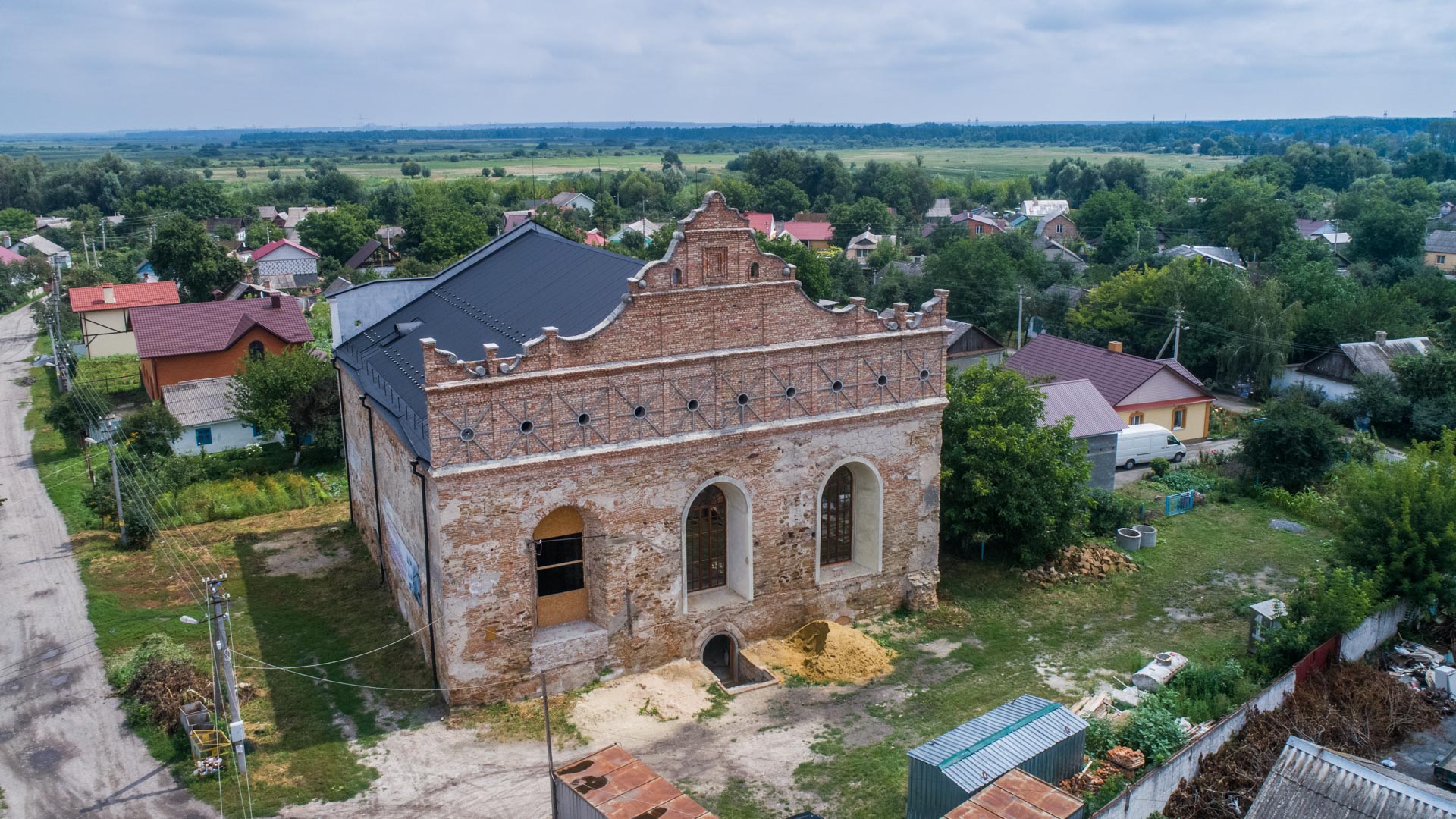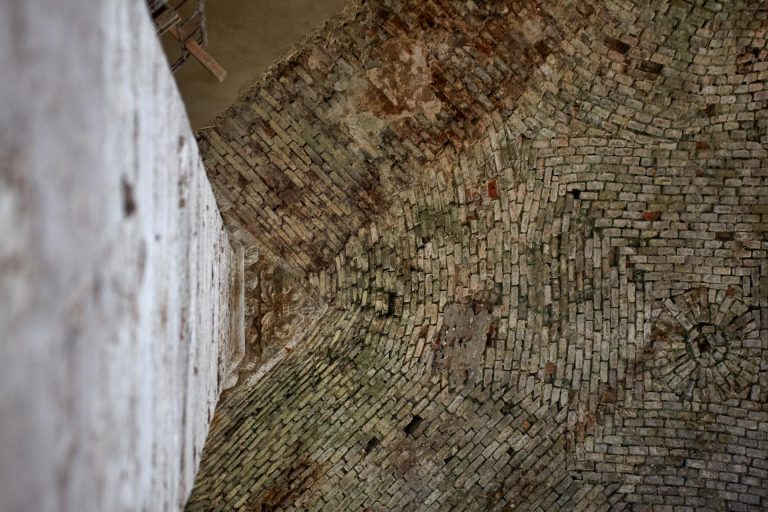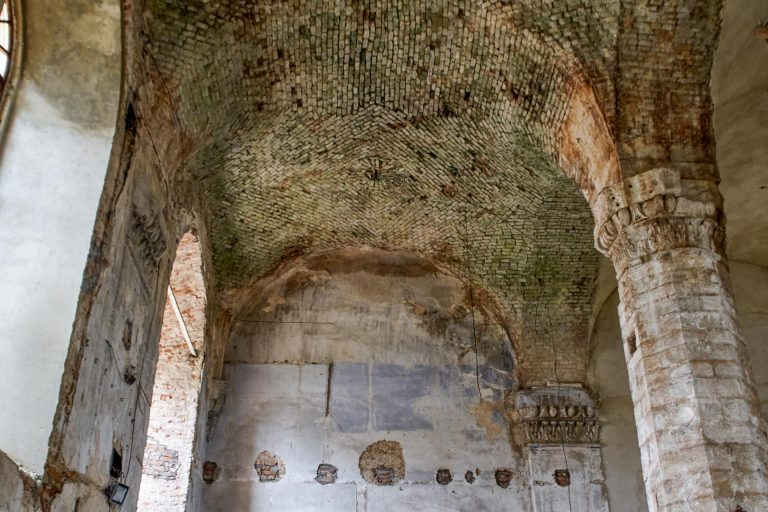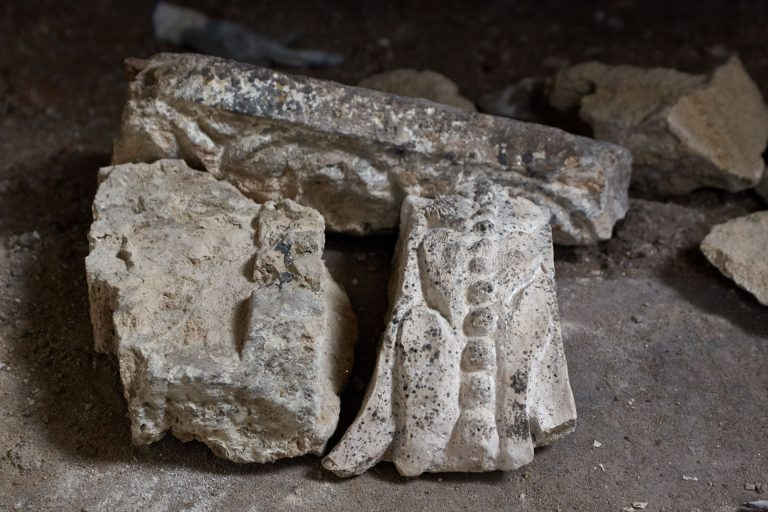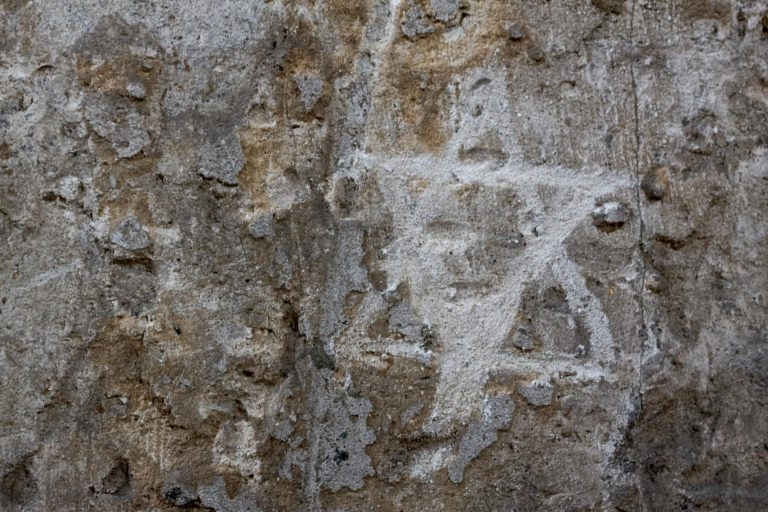One of the largest synagogues in Eastern Europe is located in Ostroh. It has been reconstructed for 20 years by a local, an ethnic Jew — Hryhorii Arshynov. Hryhorii is a professional builder who decided to save the historic monument. He has already invested more than 180 thousand dollars in the restoration. According to him, the first Jews settled this area at the invitation of the Dukes of Ostroh in the 14th century. Nowadays, according to the Association of Jewish Organizations and Communities of Ukraine, there are around 800 synagogues in Ukraine, and some of them are only partly preserved.
The owners of the city, the Dukes of Ostroh, invited Jews to Ostroh in the 16th century to facilitate the development of trade and craftings. Jews were involved in the production of beer, honey, and horilka. That is how the history of the Jewish community started in Volyn, which is one of the oldest in the territory of Ukraine. At the beginning of the 17th century, there were about three thousand Jews living there. Hryhorii Arshynov calls Ostroh the significant city for the Jewish community as it was the center of the Jewish communities’ unity at one time:

“There is such a concept — VAAD. It is a non-governmental entity that was extended beyond one state and represented the interests of the Jewish community in other countries: it was in Lithuania, Poland, and Hungary. It is more than just a territorial community. They were discussing taxes, education, and other things too. And the center of that VAAD of the four states was Ostroh at the milestone of the 16-17th centuries. There were four lands: the Greater Poland Voivodeship (located in western Poland, with the center in Poznan — ed.), the Lesser Poland Voivodeship (located in southern Poland between Silesia, Swietokrzyski land and Subcarpathia — ed.), Red Ruthenia (name originated in Polish sources in the 16-18th centuries to determine the former Principality of Halych — ed.), and Volyn.
The construction of the synagogue in Ostroh is associated with the name of Rabbi Solomon Luria, who became the Head of Rabbi High School in 1550. After him, the school was headed by the distinguished Talmudist (an expert on the code of religious and legal rules for the life of Jews — ed.) Shmuel Eidels (Maharsha), who came to Ostroh in 1598 and rebuilt the synagogue at his own expense. There are legends about this Rabbi:
“Childless couples came, talked with the rabbi, and in 9 months or in some period of time they would receive a baby. Not Jewish couples. So it was such a tolerant city, multinational, and somehow everything worked here, everything was great.”

The Synagogue
The Talmudist Shmuel Eidels (Maharsha) completed the construction of a women’s gallery, the western facade, and changed the roof of the synagogue. Hryhorii Arshynov says that the building was part of the defence structures:
“Thus, perhaps, it was not Jewish people’s idea, most likely it was a demand from the city authorities: you want to build a synagogue — it must become a fortress in case of war. There are a lot of such synagogues in Ukraine, including the one in Ostroh.”
slideshow
A synagogue is a house of prayer, where Jews study the Scriptures and pray. A sacred building might be any room that has been consecrated during a special ritual. According to Talmud, the synagogue should be located in the center of the Jewish settlement and on the high ground.
One of the biggest synagogues in Eastern Europe was functioning in Ostroh till the Soviet authority came to power. During the postwar times, according to Hryhorii Arshynov, in the synagogue building they wanted to make a bakery, but later (and up until the early ’90s) it was used as a warehouse “Misktorh” (city trade department).
There is a legend that during the Polish-Russian War of 1792 two cannonballs flew into the synagogue which did not explode because of prayers.
“The Russian army stands there and shoots with the cannonballs, shelling the city, and here the Jewish community stays fearing. And these cannonballs fly and don’t explode. Well, such a wonderful salvation. The Ostroh community writes Magelad Tammuz — a treatise on prayer about such a miracle, the miracle of the Creator is that he saved them. They prayed, believed, and he saved them. Two cannonballs are preserved. We have them in our museum. Right here they were hanging for some time, next to the entrance, it was hooked up to the ceiling, and another cannonball was embedded into the southern facade.”

Hryhorii
Hryhorii Arshynov was born in Ostroh in a Jewish family. In 1985, together with his father, he started to learn about the heritage of his people:
“We went to gather with father the lists of Ostroh’s citizens — Jewish people who died during the Holocaust. That is how the Black book of remembrance was formed, and we have started to gather it. We have started to erect the monuments.”
The Black Book of Remembrance
The collection of testimonies and documents on the Holocaust, one of the most comprehensive editions of which was published in 2002 in Jerusalem.
Hryhorii specializes in civil engineering and is engaged in restoration. He has experience working on objects of the 16-17th centuries in Kyiv and felt the power to restore the Ostroh synagogue:
“Such a sacred building can be lost forever and the Jewish people of Ostroh will be forgotten. In the framework of Ukrainian history, it would be a lost puzzle forever. And I thought: ‘I have enough skills, enough opportunities, I have my own equipment, my own scaffolding, my staff’. And this is the last point: if not me because my older children are in the USA and it is unlikely that they will deal with the Ostroh synagogue. I am the last one who can do it.”

To restore the ruin
The sacred building could not stand the weather conditions and the impact of people, so it lost its roof, windows, and door. Hryhorii Arshynov was looking for investors abroad, however, the landmark for the man was the article about Jewish heritage in the magazine “European Jewish Heritage”. In the article “To remember or to forget?”, the author Serhii Kravtsov stated that the synagogue in Ostroh is an important building and the point of no return might come very soon. The article contained an ironic comment about the inaction of the local authorities, the diaspora, and the government of Ukraine. Hryhorii Arshynov took this as a personal reproach because he is a city council member and a member of the Jewish community, so he decided to act immediately. The man approached the activist Yisroel Meir Gabbai, who takes care of preserving the tombs of tzaddiks — mediators in the communication of the believers with the Creator. They agreed to share the cost and began reconstruction.
Classmates of Hryhorii from Canada and activists from Rivne helped with money as well. In total, 180 thousand dollars have been already spent:
“28 tons of garbage were removed from the inside and outside. It was a dump. We did it all by hand, with the help of Ostroh Baptists. They helped with pleasure: for a very little payment, they took it all upstairs. And once again, the main thing was the roof, and we made it. I mean, I thought that it is my last chance to make the most of my life.”
The City council supported the initiative of the synagogue restoration. So the work has started: the walls were fixed, the metal frame was made, also overlapping and the roof was made.
slideshow
“We rebuilt the pediments, repaired the openings, then we resolutely restored the facades and plaster. Windows were like a dream, and we found money to get them done too. I am a bit in debt, but my classmate makes windows. We will figure it out, we will pay it off.”
One day, when construction work was up and running, one of the locals brought to Hryhorii a large rusty key with a star of David, which he found digging through his yard. And Arshynov recalled the legend which tells that in 1939 the Chief Rabbi of the Ostroh synagogue lost the key to the entrance to the shrine. This was considered a bad omen because difficult times were to come for the community.
“When the Soviet authority came to power, the religious life of Jewish people came to an end. In 1941 the Nazis came. It was clear that life was over. And then the communist regime started. You see, everything Jewish was not popular, as well as Ukrainian. And here the key appears, the one that foretells about troubles, it was a sign. So I think that everything will be fine with the synagogue. As the living memory of the community that used to live here and build here, and left their heritage.”

The Dream
Hryhorii Arshynov also took care of the preservation of the Jewish cemetery in Ostroh that was destroyed in 1968. Last year the cemetery got back its former status, as it was previously considered to be a monument of landscape art:
“We gathered old stones, people are still bringing back gravestones, and the oldest one is dated 1627. We installed these monuments back and brought some back from time to time. And the grave of Eidels, that Rabbi, to his grave 5 thousand or even more pilgrims travel annually. And here is the synagogue, maybe it will attract even more pilgrims. The idea is to create a center of tolerance in Ostroh.”

Hryhorii dreams of creating a permanent exhibition in the restored synagogue. He owns many exhibits that he wants to show in a gallery, so locals will remember that after the war two-thirds of the population were Jewish:
“There should be an active community here. The active community that will go to the synagogue, use it as a sacred place to pray. Not for the culture or art. I hope that with God’s help it will be like that. Everything cannot be easy. It will be difficult. If it is difficult, you’re on the right track.”

